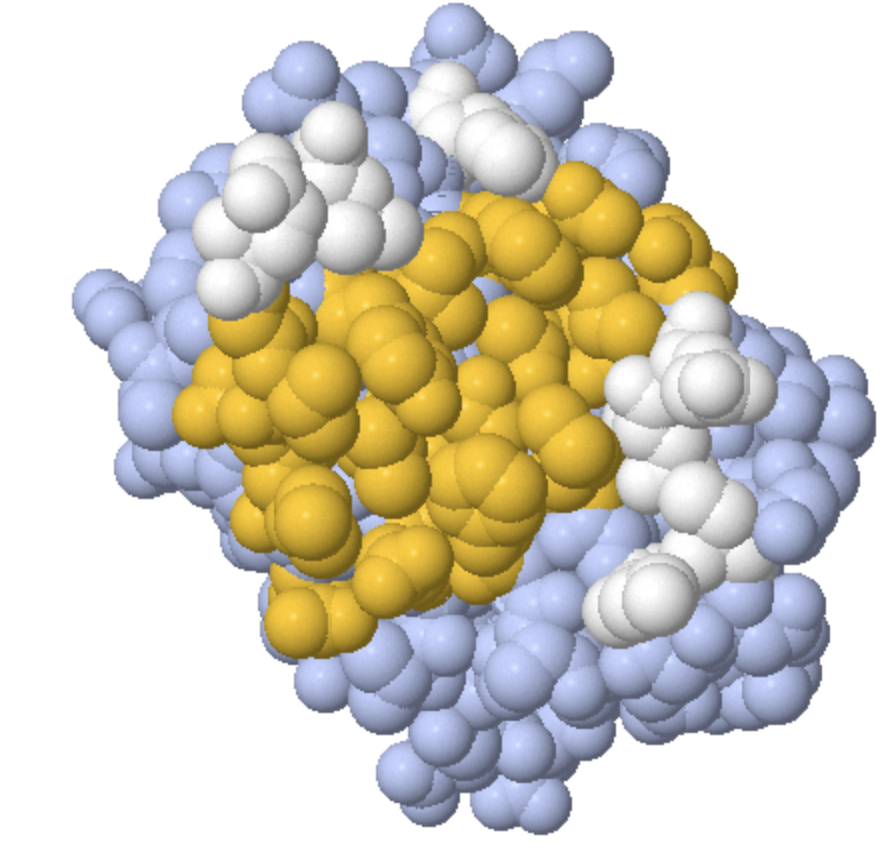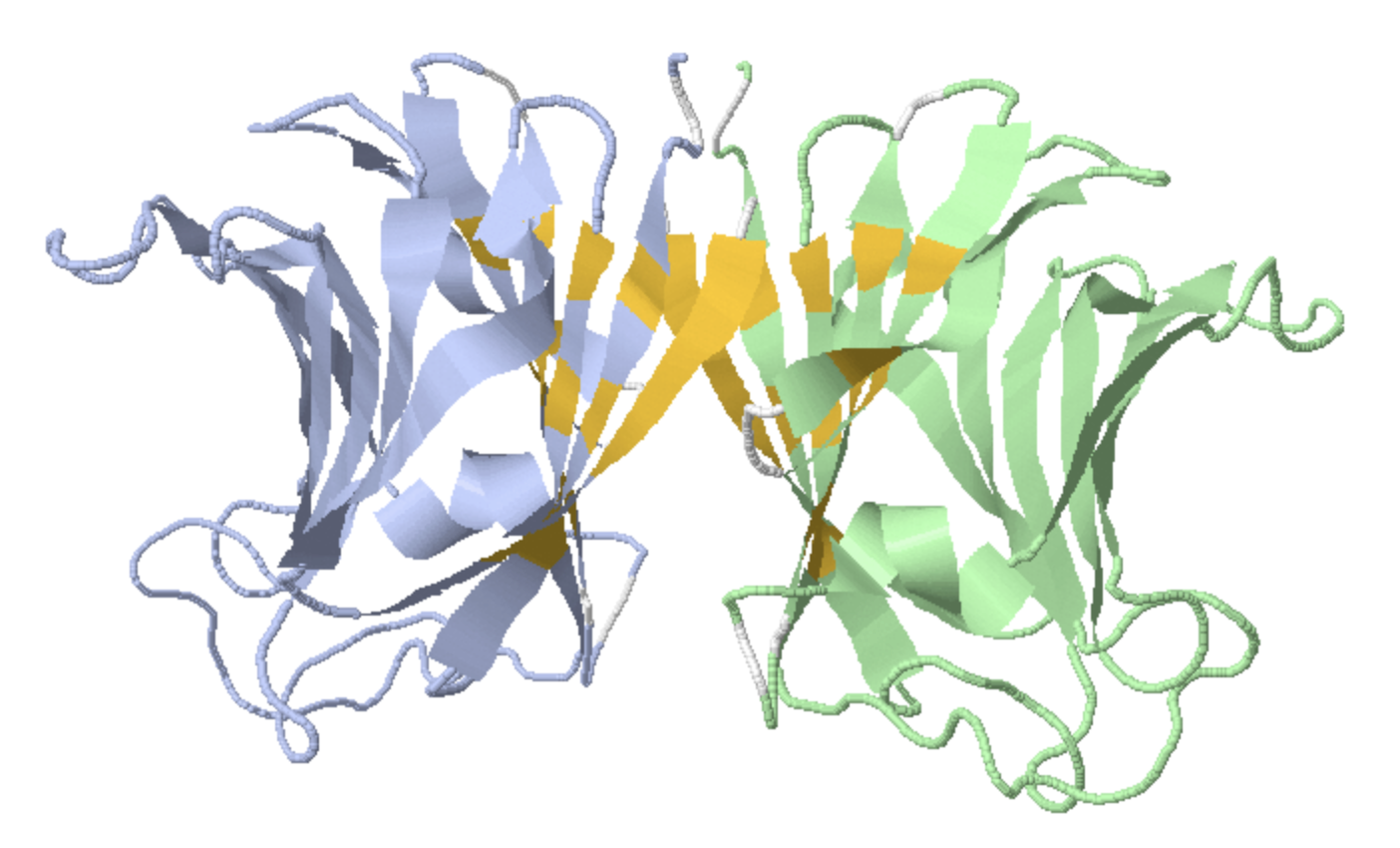Interfaces
Hierarchical Classification of Dimer Interfaces
Based on the Secondary Structures Present at Each Interface
In OLIGAMI, homodimers and heterodimers composed of single-domain subunits are grouped hierarchically according to the secondary structure features of the interface. At the Class level, interfaces are assigned according to their secondary structure content: HN (alpha-helix and other structures), EN (beta-strand and other structures), or HEN (mixture of alpha, beta and other structures). At the interface type (iType) level, subunit interfaces are clustered according to information about the number of secondary structure elements, their relative orientation(s), and the number of contact residues. Furthermore, at the contact type (cType) level, dimers are clustered based on information about the number of secondary structure elements in contact between subunits, their relative orientation(s), and the number of contact residues. You can browse each level based on the Homo and Hetero iClass lists below.
Dimer Interface classification
| Interface class | Number of iType | Number of cType | Number of chains |
| H | 14 | 111 | 8782 |
| E | 17 | 68 | 3716 |
| HE | 21 | 159 | 9922 |
| N | 2 | 3 | 248 |
Datasets
- First, a list of nucleic acid–free homodimers and heterodimers was obtained from the OLIGAMI database, and then a sublist of single-domain homodimers and heterodimers was generated by removing proteins with multi-domain registrations in SCOPe and CATH. For homodimers, entries were excluded if they had less than 90% identity of contact residues at the interface of the two subunits. Finally, coordinate data for homodimers and heterodimers were obtained for 10,761 and 1833 entries, respectively.
Definition of Interfaces and Interface Residues
- By definition, if two subunits (SCOPe domains) form a dimer, each subunit loses solvent-accessible surface area (ASA). Interface residues are defined as residues that lose >1 Å2 of ASA upon formation of an interface. We used the ASA values for each residue calculated by the program DSSP.
- If each interacting surface of two subunits has >10 interface residues, then the interacting surface is defined as an interface.
First Level: Interface Class
- We defined six interacting area types, called interface Classes, according to the composition of secondary structures for interface residues and whether they possess intermolecular beta-sheets. The secondary structures were defined using the program DSSP. All regions other than H (alpha-helix) and E (beta-strand) were classified as N. Then, the subunits were classified into each Class based on the definitions shown in Table 1.
Second Level: Interface Type (iType)
- Hierarchical clustering at the iType level was performed for each of the four interface Classes other than EN_Ih and HEN_Ih using the following information: the number of contact residues of each secondary structure and the number of secondary structure elements, the relative orientation of elements, and the number of contacts between secondary structures. Hierarchical clustering was performed using Euclidean distance and Ward's method. Classes EN_Ih and HEN_Ih were grouped according to the number of intermolecular β-sheets.
Table 1. Definitions of six Interface Classes
| Interface Class | Definition |
|---|---|
| HN Class | 2 or more H residues, 1 or fewer E residues |
| EN Class | 2 or more E residues, 1 or fewer H residues |
| HEN Class | 2 or more H and E residues |
| EN_iE Class | 2 or more E residues, 1 or fewer H residues and intermolecular β-sheets |
| HEN_iE Class | 2 or more H and E residues and intermolecular β-sheets |
| N Class | 1 or fewer H and E residues |
|
H is Helical structure defined by DSSP output. E is β-Strand structure defined by DSSP output. | |
(A)


(B)


(C)


Figure 1. Example of information pertaining to interface type (A) and the interface residues
(B and C) of the EN Class interface (PDB ID: 3m3o). The interface residues in β-strands and
non-structured regions are colored yellow and white, respectively. An Ah value of 5 means
that there are 5 pairs of antiparallel β-strands with hydrogen bonds at a given interface.
Third Level: Contact Type (cType)
- At the cType level, hierarchical clustering was performed for each iType level using the following information: the number of residue pairs between secondary structure elements and the number of contacts between secondary structure elements.
(A)


(B)


Figure 2. Example of information pertaining to contact type (A) and the interface residues (B)
of the EN Class interface (PDB ID: 3m3o). P and A values of 2 and 4 mean that there are 2 pairs of
parallel β-strands and 4 pairs of antiparallel β-strands at a given interface.
PDL
